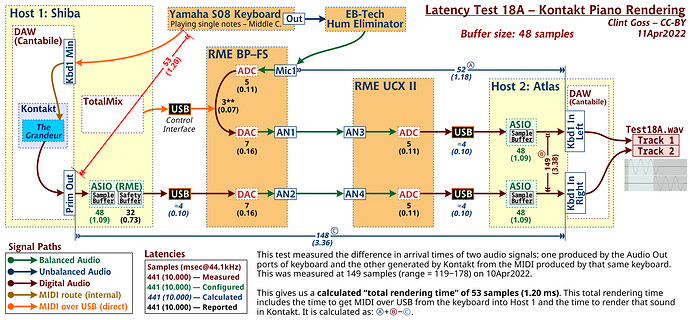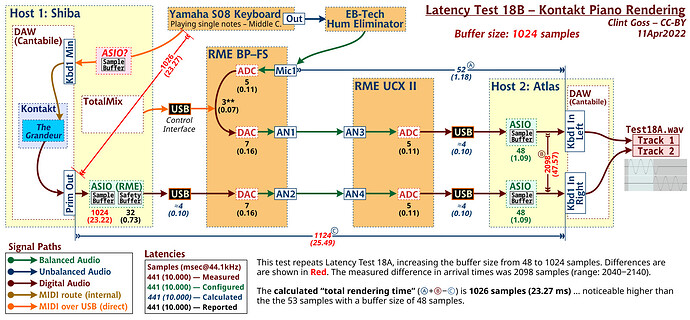I’m getting results in my latency testing that seem to indicate that MIDI coming in from a device passes through, or is at least delayed by, the ASIO sample buffer. I’ve only done this with MIDI over USB - have not tested MIDI over Serial/DIN.
Could anyone comment on this? Is it true? Is it a Cantabile thing?? Any way around it???
Details: The two tests below were looking at the time it takes to render MIDI to audio in Kontakt. I used two different buffer sizes in Tests 18A and 18B, and that’s when the difference showed up.
The time from the keyboard MIDI through the end of sound rendering, which (one would think) should stay the same, in fact went up from 53 samples to 1026 samples - a difference of 973 samples. One explanation is that the incoming MIDI from the keyboard goes through the ASIO sample buffer.
In this case, changing the buffer size from 48 to 1024 would account for a difference of 976 samples - which almost perfectly accounts for the difference (to within 3 samples).
I am showing a red “ASIO?” box in the diagram below, which would account for these results:


